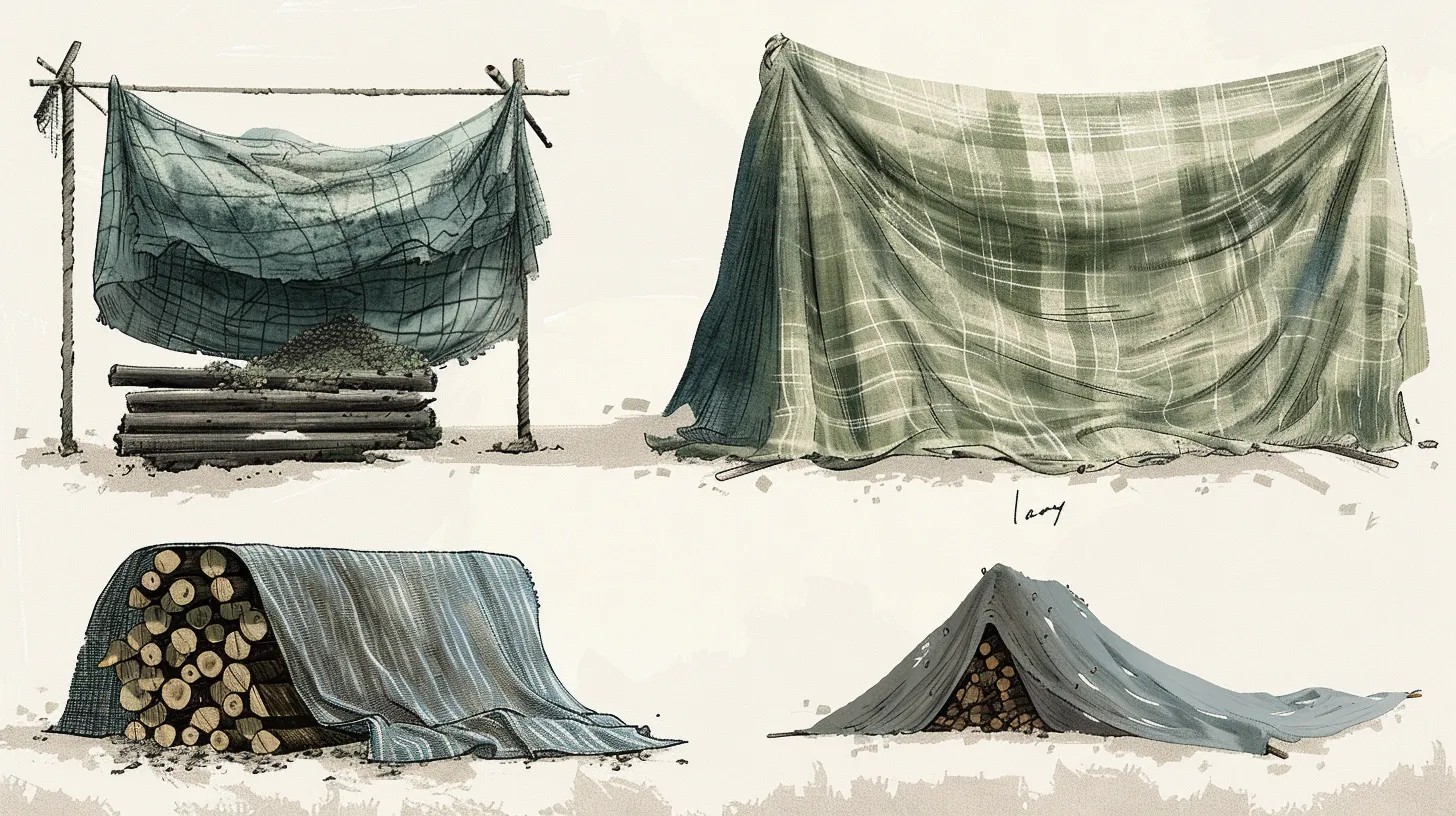Canvas tarps are invaluable tools for various applications, from construction to camping. Their durability and versatility make them a go-to choice for protecting valuable assets from the elements. However, like any tool, tarps require proper care and occasional repair to maximize their lifespan and effectiveness. This guide provides A Comprehensive Guide To Repair And Care For Your Tarps, ensuring they remain reliable for years to come.
Canvas Tarp Types and Benefits
Canvas tarps are available in various types, each designed with specific features and benefits. Water-resistant treated fabrics are a popular choice, offering durability and protection against moisture and mildew. These tarps often undergo a silicone treatment to enhance their water resistance, making them suitable for outdoor use, construction, and painting tasks.
For heavy-duty applications, 21 oz tarps with D-rings provide robust performance. These thicker tarps feature reinforced D-rings for secure tie-downs and come in various colors like green, mustard tan, and brown. Flame retardant tarps, essential in fire-prone environments, are constructed from high-quality duck cotton and feature heavy-duty brass grommets and triple-thick hems for enhanced durability and safety.
Professional grade drop cloths, often manufactured in the USA, are a top-tier option for painting and construction projects. These drop cloths are known for their absorbency and reusability, featuring double-stitched hems and seams for added strength. Natural duck canvas, celebrated for its traditional unprocessed quality, offers a reliable and eco-friendly option in various tarp applications.
Key Uses for Canvas Tarps
Due to their robust and water-resistant properties, canvas tarps are extensively used in a variety of settings, including outdoor areas, construction sites, and painting projects.
In outdoor environments, these tarps provide excellent protection against harsh weather conditions, shielding equipment, vehicles, and outdoor furniture from rain, wind, and sun.
In construction projects, canvas tarps are fundamental for safeguarding building materials like lumber, steel, and metal from moisture and contaminants. Their breathable nature prevents condensation buildup, vital for maintaining the integrity of sensitive materials. They also serve as reliable covers, promoting the long-term durability of the underlying assets. Additionally, canvas tarps are a cost-effective solution for creating temporary shelters or ground covers. Their ability to block out elements while allowing air circulation makes them ideal for applications such as boat covers and car covers, where moisture control is as important as protection from the elements.
Selecting the Right Canvas Tarp
Understanding the variety of applications for canvas tarps highlights the importance of selecting the appropriate type. When choosing a canvas tarp, consider its durability and strength, largely determined by the canvas weight. Heavier tarps are more suitable for rigorous or industrial applications.
Opting for treated canvas tarps with water-resistant coatings is essential for outdoor usage, protecting against moisture and mildew, extending the tarp’s lifespan. Features like reinforced hems, seams, and grommets contribute significantly to the tarp’s resilience and longevity, preventing tearing and wear in harsh weather conditions.
The size and shape of the canvas tarp must be tailored to the specific needs and coverage requirements. Incorrect sizing can lead to inadequate protection or material wastage. Evaluating the weave density is essential for applications involving liquids or paints, as a denser weave offers better resistance and prevents seepage.
Maintenance Tips for Durability
Maintaining the durability of your canvas tarp involves regular cleaning and careful inspection for any signs of wear or damage. To guarantee long-term use, incorporate routine maintenance practices that enhance the tarp’s resilience.
Start by regularly sweeping off dirt and debris from the surface. For cleaning, use a mild soap and perform gentle scrubbing to remove dirt without damaging the fabric. Avoid harsh chemicals as they can weaken the canvas fibers.
Inspection plays a critical role in maintenance. Check the tarp for any tears, abrasions, or damaged grommets. Early detection and prompt repairs are essential to maintain the tarp’s integrity and functionality. Pay special attention to the grommets during both cleaning and usage, as these are pivotal in securing the tarp but can be susceptible to damage if mishandled.
Overcoming Common Canvas Issues
Addressing common issues with canvas tarps, such as shrinkage, tears, and grommet damage, requires a proactive approach. Regular inspection is important to enhance longevity and maintain durability. Check for any signs of wear, such as tears or loose grommets. Early detection allows for timely repairs, preventing further damage and extending the tarp’s usable life.
For effective maintenance, cleaning should be done with mild soap and gentle scrubbing to avoid exacerbating any existing damage. Give special attention to grommets during cleaning to ensure they are not dislodged or damaged. After washing, thorough drying is essential; storing the canvas tarp while it is still damp can lead to mold and mildew formation.
To counteract shrinkage, be mindful of the drying process. Avoid direct high heat and opt for air-drying in a well-ventilated area. This method helps maintain the original size and quality of the canvas while contributing to mold prevention.
Innovations in Canvas Tarp Design
While traditional maintenance practices are important, recent innovations have further enhanced the durability and functionality of canvas tarps. One of the most significant advancements is the integration of UV-resistant coatings. These coatings protect the tarps from the degrading effects of sunlight, vastly improving their long-term durability when used outdoors. Edges and corners are now often reinforced, which prevents tearing and extends the life of the product.
Another remarkable innovation involves the use of rust-resistant grommets. These grommets combat corrosion, ensuring that the tarps remain functional and secure over extended periods. Manufacturers have also begun incorporating breathable materials. This allows air to circulate more effectively, preventing the buildup of condensation and reducing the risk of mold and mildew. Alongside breathability, there’s a shift towards using lightweight yet strong materials, making the tarps easier to handle and transport without sacrificing strength.
Comparing Canvas With Other Materials
Canvas tarps stand out due to their exceptional durability and versatility compared to materials like polyethylene and vinyl. Renowned for their strength and resistance to tears and abrasion, canvas tarps offer a robust solution for a variety of needs. Unlike their synthetic counterparts, canvas tarps are highly breathable, promoting better ventilation.
Moreover, canvas tarps naturally exhibit water resistance and mildew resistance. This is a significant advantage over synthetic materials that often require chemical treatments. The inherent qualities of canvas tarps reduce the need for frequent replacements due to wear and tear, underscoring their durability and long-term usability. Being biodegradable, they present an environmentally friendly alternative to plastic tarps.
Real-World Canvas Tarp Applications
In construction, canvas tarps are indispensable for protecting various materials from environmental elements, shielding building materials such as lumber, steel, and metal from moisture, dust, and contaminants. They serve as durable weather covers for boats, vehicles, and outdoor furniture, facilitating air circulation to prevent condensation.
Canvas tarps provide reliable equipment protection, safeguarding tools, machinery, and other essential gear from rain, wind, and sun. They are frequently utilized as temporary shelters or ground covers during camping or fieldwork, offering a dependable layer of protection against the elements. The durable and versatile nature of canvas tarps makes them a preferred choice in various real-world applications where protection and resilience are paramount.
By following these guidelines for care and repair, you can significantly extend the life of your canvas tarps, ensuring they continue to provide reliable protection for your valuable assets.

